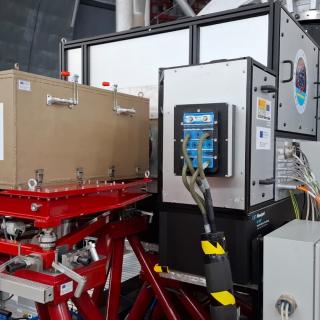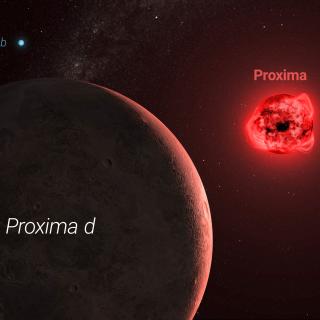The claimed detection of a diffuse galaxy lacking dark matter represents a possible challenge to our understanding of the properties of these galaxies and galaxy formation in general. The galaxy, already identified in photographic plates taken in the summer of 1976 at the UK 48-in Schmidt telescope, presents normal distance-independent properties (e.g. colour, velocity dispersion of its globular clusters). However, distance-dependent quantities are at odds with those of other similar galaxies, namely the luminosity function and sizes of its globular clusters, mass-to-light ratio, and dark matter content. Here we carry out a careful analysis of all extant data and show that they consistently indicate a much shorter distance (13 Mpc) than previously indicated (20 Mpc). With this revised distance, the galaxy appears to be a rather ordinary low surface brightness galaxy (Re = 1.4 ± 0.1 kpc; M⋆ = 6.0 ± 3.6 × 10^7 M⊙ ) with plenty of room for dark matter (the fraction of dark matter inside the half-mass radius is >75 per cent and Mhalo/M⋆ >20) corresponding to a minimum halo mass >10^9 M⊙ . At 13 Mpc, the luminosity and structural properties of the globular clusters around the object are the same as those found in other galaxies.
The ultra-diffuse galaxy KKS2000]04 (NGC1052-DF2), towards the constellation of Cetus, considered previously a galaxy with no dark matter.
Advertised on
Authors
Ignacio
Trujillo Cabrera
Michael Andrew
Beasley
A. Borlaff
E. R. Carrasco
Arianna
Di Cintio
M. Filho
Matteo
Monelli
M. Montes
J. Román
Jorge Francisco
Sánchez Almeida
D. Valls-Gabaud
Alexandre
Vazdekis Vazdekis
References
![A distance of 13 Mpc resolves the claimed anomalies of the galaxy lacking dark matter The ultra-diffuse galaxy KKS2000]04 (NGC1052-DF2), towards the constellation of Cetus, considered previously a galaxy with no dark matter.](/sites/default/files/styles/crop_rectangle_21x9_to_1280/public/images/news/Galeria_IAC_Figura_Trujillo_2_final.jpg?h=e5f303cf&itok=0sVOsgZ5)


